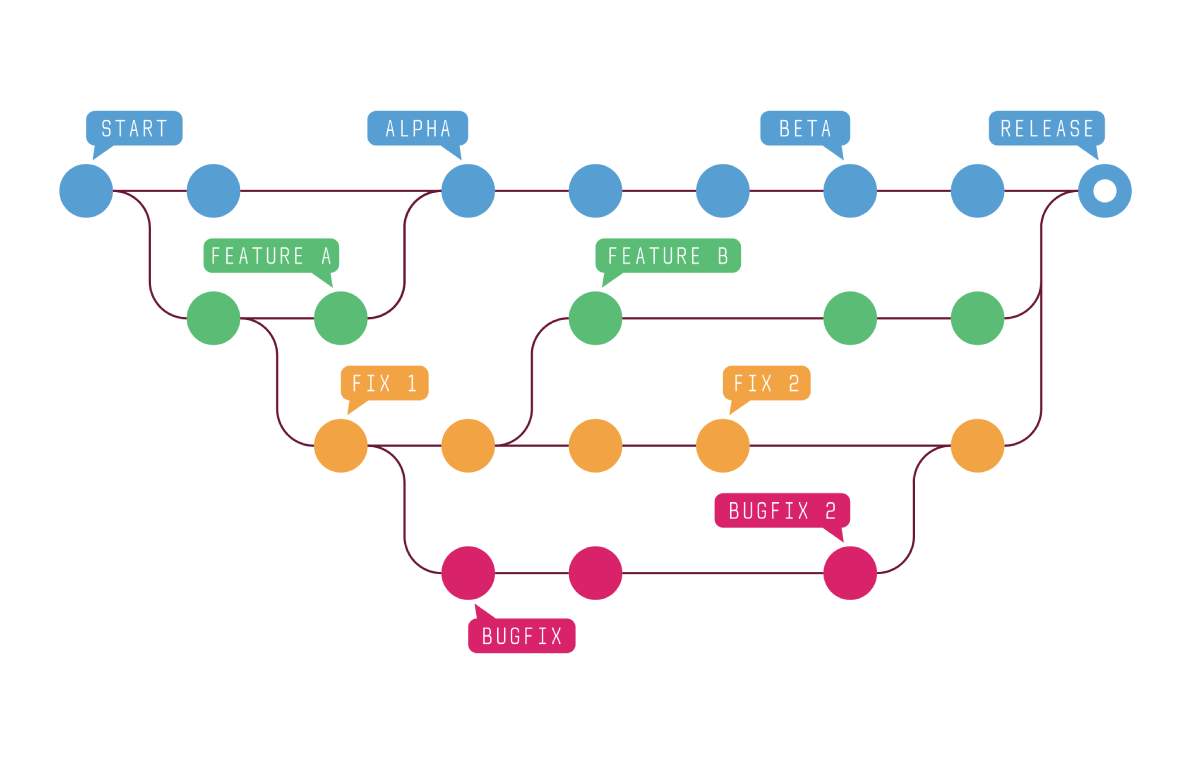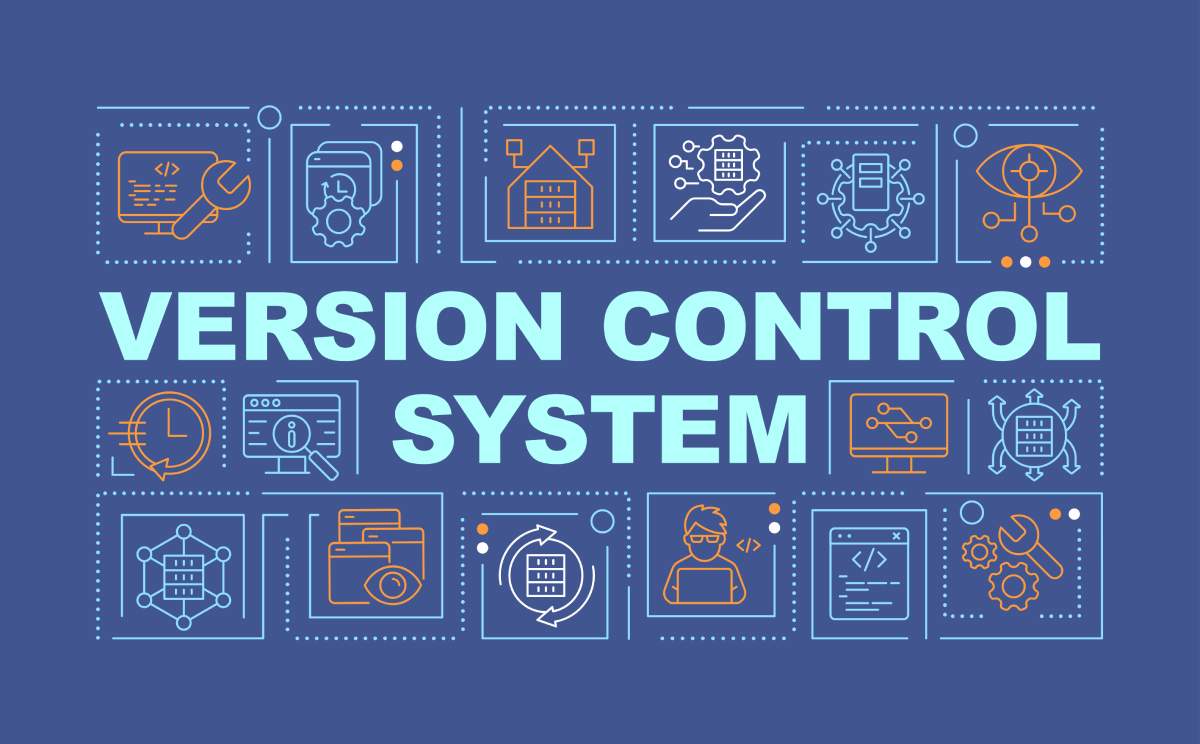Nov 10, 2023 JIN
Understanding VCS: A Comprehensive Look at Version Control Software
In software development, code is the lifeblood of innovation, collaboration, and progress; the importance of a robust and efficient Version Control System (VCS) cannot be overstated. The evolution of technology has propelled us into an era where software is at the heart of nearly every facet of modern life, from the applications that power our smartphones to the complex systems driving industries forward. Amidst this digital transformation, the need to manage, track, and collaborate on code seamlessly has led to the rise of version control systems as an indispensable tool for developers, engineers, and teams.
In short, version control entails monitoring and overseeing file alterations over time. Version control software plays a central role in automating this procedure. However, this merely scratches the surface of its capabilities and its significance. Today’s blog will be digging deeper into the VCS field and clarifying its numerous aspects. Let’s hop on!
What is a VCS (Version Control System)?
What is Version Control?
As a procedure, version control involves monitoring and administering alterations made to digital assets throughout their timeline.
Diverse approaches exist for executing version control, from the straightforward practice of following specific file naming and organizational protocols. Nevertheless, the discourse around version control generally pertains to employing dedicated software or systems. These instruments are devised to facilitate collaborative team efforts and safeguard against the loss of crucial endeavors.
Also, it’s worth noting that while “version control” and “source control” are often interchanged, the latter focuses explicitly on monitoring source code.
What is a Version Control System?
A version control system (VCS), known as version control software, mechanizes the version control process. It monitors alterations to a file or group of files across time, alleviating the need for manual management of file versions or the use of personalized automation scripts. This system maintains an exhaustive chronicle of your code and other files, allowing you to revert to previous versions when necessary.

Branching and Merging in Version Control
Branching is a crucial aspect of version control systems. The below diagram showcases the history of changes to assets through branching. The main line represents the core assets’ evolution, known as the trunk line. A branch separates from the mainline at each divergence, forming a unique path.
In version control systems, these tracks are called “branches.” Branches protect the mainline from complications caused by changes, maintaining project integrity. Differences arise over time as changes accumulate in branches and the mainline. To preserve branch contributions, changes must be merged back into the mainline, often resulting in conflicts. This step is essential for smooth project progression and mainline functionality. A robust version control approach emphasizes mainline upkeep, allowing branches to build on prior work and address unintended behaviors like “bug fixes.”
Why Is Version Control Software Important?
Ensuring version control is paramount for overseeing changes in code, files, and digital resources. Version control software is recommended for all assets and collaborative development efforts that engage multiple team members.
However, version control goes beyond managing files; it should accelerate product development and deployment. This is crucial in DevOps workflows, where the latest versions are tested and built upon changes. Proficient version control systems adeptly predict conflicts before reaching the mainline, letting developers resolve problems and halt their spread.
What Are Some Key Version Control System Benefits?
Utilizing version control for complex projects brings improved collaboration and quicker development. Though system specifics differ, the following points outline vital benefits.
Gives Your Team a Single Source of Truth
A key advantage of utilizing a version control system is that it provides your entire team with a unified point of reference. This ensures the whole team operates with an identical dataset (files, code, etc.) and can conveniently access it from a shared location.
Maintains a Full File History & Improves Visibility
A practical version control system provides you with the ability to track every alteration made to each file, along with details about the authorship and timestamps of the changes, which becomes particularly crucial when there are governance, risk, and compliance (GRC) or regulatory requirements, notably in industries such as automotive, aerospace, medical devices, and semiconductors.
Moreover, version control software improves visibility, identifying current contributors and preventing duplicate work or overwrites. It also allows quick reverting to prior versions in case of issues.
Enables Concurrent Development
As projects grow complex, effective version control becomes crucial. With many contributors, a capable system allows parallel development, enhancing collaboration and expediting product readiness.
Picture managing an IoT rollout for advanced internet-connected security cameras. Over time, you could use ten different camera models, each with a unique chip needing specific software. You handle diverse code versions for each camera’s functions with the correct version control software. The process is simple if a crucial security patch is needed to prevent camera hijacking. You can swiftly identify the impacted code, effectuate changes, and implement the necessary fix.
Enables Better Team Collaboration
Gaining insight into team members’ ongoing tasks and the capability to collaborate simultaneously greatly enhance collaborative efforts. In extensive and intricate development projects involving numerous contributors, version control becomes imperative for fostering efficient collaboration.
Furthermore, in the modern business landscape, talent is dispersed globally. Enabling universal access to team members across multiple locations is essential. A centralized, secure information source, supported by solid identity and access management protocols, is pivotal. A fitting version control system ensures easy access and collaboration on the latest project iteration.
Supports Automation Within Development
Enhancing quality and increasing productivity are critical goals for modern development teams. These objectives are achieved through task automation, covering software testing, quality assurance, and deployment.
Continuous Integration (CI) is a common practice in software development involving automated builds and code evaluations. In domains like hardware development, such as semiconductors, automation extends to:
- Conducting tests using field programmable gate arrays (FPGAs).
- Integrating with simulation verification and synthesis systems.
These FPGAs, verification tools, and testing systems involve controlled versioning, including extensive data files. Precise tracking and management of even minor changes are crucial. This highlights the vital role of version control software as the foundation of your Intellectual Property (IP) domain. The right software can proficiently handle millions of automated transactions daily, spanning a multitude of files.

Types of Version Control Systems
The prevalent version control systems come in two main types: centralized and distributed, each with characteristics.
Centralized Version Control
In a centralized version control system (CVCS), a single server holds all file versions and alterations. In this setup, users can check out a file, modify it, and then check it back into the central server. Alternatively, they can create a separate branch, work on it individually, and subsequently integrate it with the main branch. All changes, including commits and merges, synchronize with the central server.
A key advantage of a centralized VCS is that every user gains swift access to the latest file version. This significantly mitigates the risk of overwriting each other’s work, redundant efforts or investing time in changes that can’t be merged (such as binary files).
Distributed Version Control
On the other hand, with a distributed version control system (DVCS), every user obtains a copy of the repository to make local file modifications on their machines. While a principal repository exists, it doesn’t store complete files and their changes; instead, it preserves the differences between files, excluding binary files.
This approach offers the benefit of quicker commit times compared to specific centralized systems. Additionally, it permits users to work offline, enhancing flexibility.
Popular version control systems and tools you shouldn’t miss
Here’s a quick look at some widely used version control tools, along with their pros and cons:
- SVN: Subversion, a centralized agency, offers more complexity than local systems but risks data loss if the central repository corrupts.
- TFS: Microsoft’s Team Foundation Server (TFS) is also centralized, sharing drawbacks with SVN. When paired with Azure DevOps, it combines with GIT for distributed control.
- Mercurial: This open-source, distributed system surpasses TFS and SVN by mirroring history in local repositories, preventing data loss.
- Git: Similar to Mercurial, Git is distributed and comes with GitLab (repository management) and GitHub (repository hosting).
How Does Version Control Software Work?
In general, version control software automates version control by continuously tracking file changes. It functions like this:
- A repository is established to store files and their versions.
- As changes are made, they are automatically logged with details.
- When team members wish to edit a file, they check it out, make changes, and commit them to the repository. This prevents overwriting.
- Changes are shared once checked in. “Locking” files can prevent changes beneath ongoing work.
- To experiment without affecting others, a new branch is created. Changes in isolation can be merged back to the main branch.
This method fosters collaboration, enabling concurrent work while reducing conflicts. The software tracks changes, simplifying version retrieval and understanding. In software development, design projects, or any digital endeavor, version control ensures seamless teamwork, progress, and data integrity.
Conclusion
As we navigate the intricate landscapes of modern software development, one truth remains unwavering: change is inevitable. Version Control Systems are sentinels against chaos, offering a structured haven for code evolution. From the rudimentary foundations of local VCS to the sophisticated orchestration of distributed systems, the journey through version control has been a testament to humanity’s insatiable quest for collaboration and progress. As we explore this field, let’s think of things that transcend mere bytes and repositories. Let’s embrace version control as a paradigm of collective creativity and a safeguard against errors, which motivates innovation knows no bounds. As each line of code tells a story, so does the evolution of version control systems chronicle the narrative of our ever-advancing technological saga.
ContactContact
Stay in touch with Us













